Days 76, 77, 78, and 79: Bloated eels. Molten bouquets. Ransom notes.
If you're excited by the thought of stepping into the stale, shallow water of a neglected, moonlit canal in the middle of nowhere, casting in a short, baited line with a steel lead at the end, and pulling up a shiny, slithering eel to squeeze about hoping that something exciting might happen, then I suggest you consider the art of buttercream piping.
Let's talk about buttercream for a moment. Here in America we tend to prefer a coarser sort of frosting, one that's plentiful enough in powdered sugar for us to feel its not necessarily unpleasant grit on our palates and between our teeth. This supersweet frosting is an American classic; the recipe is even on the box of sugar. When we're exposed to a true buttercream (like the ones we've been making since Day 11) for the first time, it tends to shock us slightly for two reasons: it's not extremely sweet, and it's got that used-car-dealer quality of being almost too smooth to be trusted. Many of us turn tail and flee back to Gritty Sugarville, but if you give its silky cousin a second chance, you may surprise yourself by becoming addicted to it. (Allow me, as if you had a choice, to theorize about this phenomenon for a moment. If you consider our general food aesthetic as a nation, dessert equals sweet. It's a pretty one-dimensional sort of characteristic that has come to be the guiding principle in our hunt for dessert. Obviously there are other things we look for - texture, temperature, color - but from the standpoint of flavor, we look for "sweet" above all others. The somewhat more European (particularly French) tendency is to judge for other flavor components; buttery, for example, and spicy or herbal. This isn't, of course, to the exclusion of sweet, but the sweetness doesn't override the other flavors to the extent that you'd find in, say, a classically American cupcake. Even a palmier, which is simply a thin slice of puff pastry rolled and folded in pure sugar and baked to a deep golden brown, has a deeper and more complex flavor: nuttiness from the wheat, more nuttiness and a slight bitter note from the caramel, and the butter's... well... butteriness. The sugar is on stage, but there's no spotlight. The textures of American foods, too, tend to steer away from buttery, whereas European cookery and baking call for far more of it as a rule, the resultant texture being just a side benefit. Given these tendencies of the American palate, when we taste something that should be pretty familiar, like icing, and it's not only less sugary than we expect, but also has an exotic texture, our neophobia kicks in and we tend to revert to what's old and comfortable - in this case, gritty frosting. There's nothing wrong with the gritty stuff, but don't exclude the buttery stuff. Just make sure that you get a good one - make the Day 11 recipe if you have to. Its constitution should be moderately soft but not melting (until it’s on your tongue); its flavor should be sweet and buttery, with clear but not cloying highlights of whatever essences have been added (rum, vanilla, or the like); and its texture should be beguilingly satiny. You’ll like it once you’ve had a good one twice, you’ll see. I digress.)
Obviously a very common treatment of buttercream is in piping, and so began our lesson, and our segment on Cake Decorating. We started with the commonest of shapes, the shell. Now here’s where the eels come in. You fit a plastic pastry bag with a metal tip that has a star-shaped opening. Then you fill the bag with huge gobs of buttery icing. Buttery icing, by the fault of its own magic, melts at just a few degrees below body temperature. So, in keeping with the theme of pastry in general, you have to do it accurately, and you have to do it quickly. As you attempt to squeeze out practice shell upon practice shell, you realize that you’ve got melted buttercream (in other words, melted butter) all over your hands. Now you’ve got a giant, squishy, slippery mess between your hands, and the goal is to squeeze it in a very precise way in a very controlled rhythm. No problem. This eel even has teeth, in the form of the many-pointed star tip, with which, shocking as it may be, I managed to stab the webbing between my forefinger and thumb.
Hesitant as we were to retire from two full days of piping practice shells, Day 78 brought us to piping buttercream roses. This is clearly going to be a handy skill for those of us who go on to do any cake decorating, but it’s painfully obvious as well how much practice we’ll need before we can consider it a marketable still. If I ever get any good at it, I’ll remember this phase of my artistic life, perhaps, as my Salvador Dali Period. The beauty of a shell is that, even when the icing is melty, it’s still allowed to lay down. Petals, they tell me, are supposed to point up straight. No kidding.
After a day and a half creating these eerie miniatures - perfect set pieces for a Tim Burton film about a forgotten garden - we began working with royal icing. Made using egg whites and sugar, royal icing hardens to the point that it’s unpalatable; it’s the stuff you see all over gingerbread houses not only as a snow effect, but quite literally as glue - more to the point, mortar. Its very effective use as a décor element makes it a common medium for writing as well, which we learned to do using a cornet. Melting is no longer our problem, but speed is still a factor, since this cement is the quick-drying kind. It’s taken a number of decades for my handwriting to improve to its current, terrible level. Hopefully, if I practice forty or fifty quick times a day over the next twenty-something years, my kindergarten-royal-icing-scrawl will also be marginally legible by the time I’m in my mid-fifties. I’ll keep you posted.
The timbre of these first four last-quarter lessons is different. Everything we’ve created up to this point has been something we can learn to do well fairly quickly (with the exception of cornet work, naturally). These new skills are ones that will require hours and weeks and years of practice and honing before we’re even modestly proficient.
Wedding cakes, all of a sudden, seem a whole lot cheaper.
Monday, September 24, 2007
Subscribe to:
Post Comments (Atom)



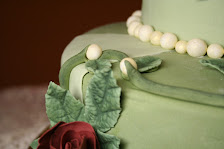

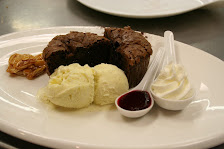
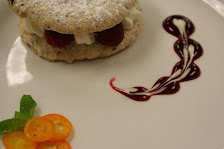
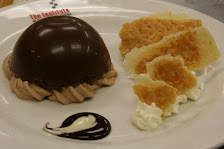
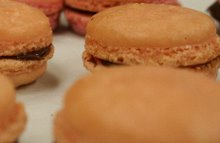
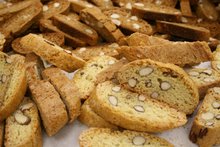
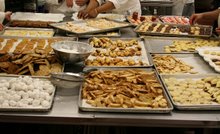



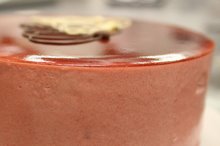



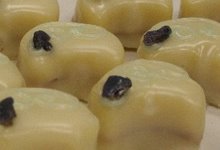
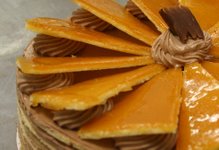



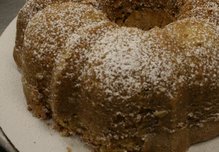
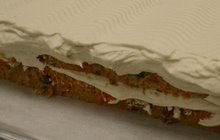


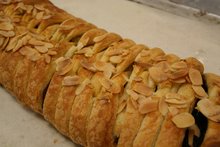






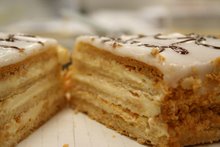
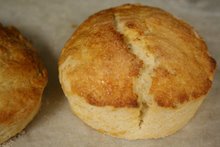


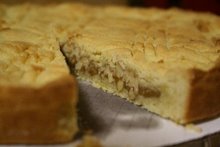












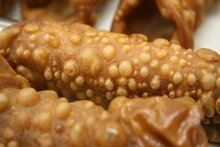


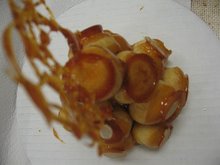
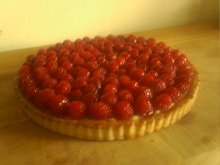


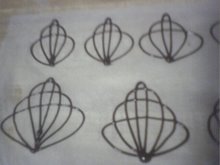


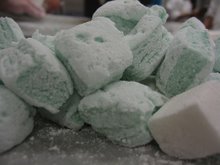

1 comment:
haha thanks for the laugh!! mmmm do i wish i could try those wedding cakes
Post a Comment